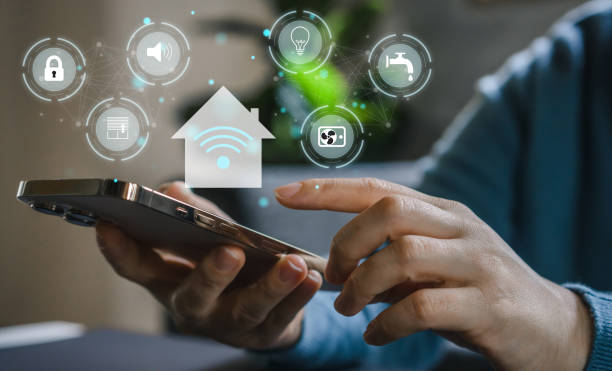Transform Your Home’s Comfort with HVAC Home Automation Systems
HVAC home automation is revolutionizing the way homeowners control their indoor climate, offering unprecedented convenience, energy efficiency, and personalized comfort. By integrating smart home devices with your heating and cooling systems, you can create an intelligent environment that adapts to your lifestyle while reducing energy consumption and costs.
Modern home automation systems allow you to monitor and adjust your home’s temperature from anywhere, set automated schedules, and even optimize energy usage based on occupancy patterns. Whether you’re upgrading an existing HVAC system or building a comprehensive smart home integration from scratch, understanding HVAC home automation is essential for enhancing your comfort and maximizing efficiency.
What Is HVAC Home Automation?
HVAC home automation refers to the integration of smart home technology with your heating, ventilation, and air conditioning systems to create an intelligent climate control network. This technology enables your HVAC system to communicate with other smart devices throughout your home, creating a cohesive ecosystem that responds to your preferences automatically.
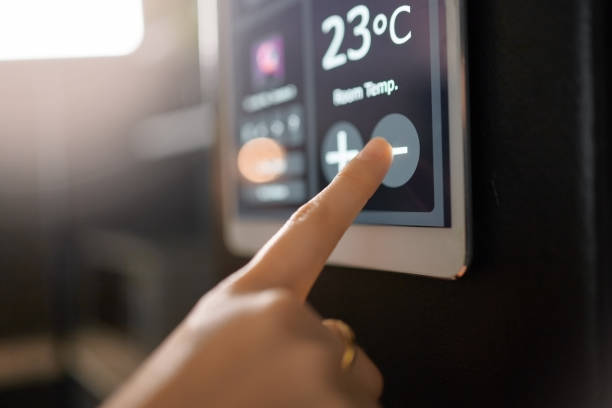
A smart HVAC system uses sensors, connectivity, and advanced algorithms to maintain optimal temperature settings while minimizing energy consumption. Unlike traditional thermostats requiring manual adjustment, automated systems learn your habits, respond to voice assistants, and can be controlled remotely via wi fi connectivity.
Modern home automation systems integrate seamlessly with various smart home devices, including security cameras, lighting systems, and other devices that contribute to your home’s intelligence. When considering upgrades, it’s helpful to understand factors like HVAC system sizing and new HVAC system cost to make informed decisions about your smart home integration journey.
Key Components of HVAC Home Automation
Understanding the essential components of HVAC home automation helps you build a system that delivers maximum comfort and efficiency. Each component plays a specific role in creating an intelligent climate control ecosystem that responds to your needs automatically.
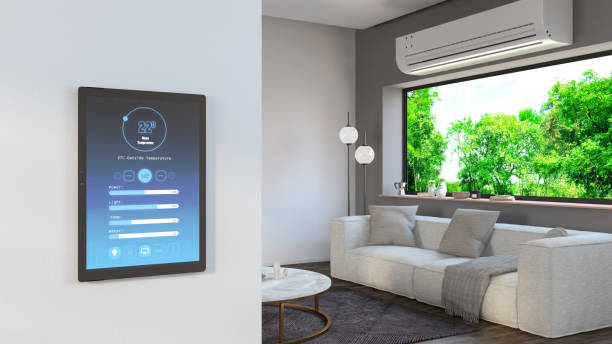
Smart Thermostat: The Control Center
The smart thermostat serves as the brain of your HVAC home automation setup, offering features like learning algorithms, geofencing, and detailed energy management systems that help you optimize energy usage. Premium smart thermostats detect when you’re away and automatically adjust settings to save energy, then return to your preferred personalized comfort settings before you arrive. According to the Department of Energy, proper thermostat management can save up to 10% annually on heating and cooling costs.
Smart Vents and Zone Control
Smart vents represent a breakthrough in achieving precise temperature control throughout your home by opening and closing automatically to direct airflow where needed. These intelligent components create zones with different temperatures to accommodate individual preferences in various rooms while working with your HVAC system to eliminate hot and cold spots. Zone control systems ensure consistent comfort while reducing wasted energy on unoccupied spaces, making them an excellent complement to your cooling systems and heating equipment.
Integration with Other Smart Home Devices
True smart home integration extends beyond temperature control, allowing your HVAC home automation system to communicate with other smart home devices and create sophisticated automation scenarios. Voice assistants like Amazon Alexa, Google Assistant, and Apple’s Siri enable you to adjust your home’s climate with simple voice commands, adding convenience to your daily routine. The ability to control your heating and cooling systems through multiple interfaces, including remote control via smartphone apps, ensures you always have access to comfort at your fingertips.
Benefits of HVAC Home Automation
The advantages of implementing HVAC home automation extend far beyond simple convenience, touching every aspect of home comfort and household budgets. From substantial energy savings to unprecedented control over your indoor environment, these systems deliver measurable value that continues to grow over time.
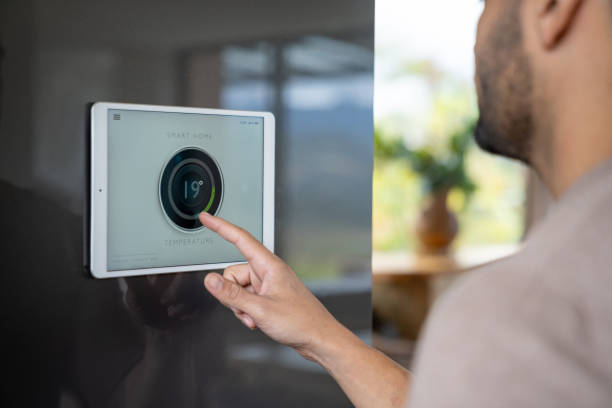
Key Advantages at a Glance
HVAC home automation delivers multiple benefits that transform your living experience:
- Dramatic Energy Savings: mart devices continuously monitor and adjust your system’s operation to minimize waste, with homeowners typically seeing 15-30% reductions in energy consumption. Energy management systems provide detailed insights into usage patterns, helping you identify opportunities to save energy and reduce utility bills while using less energy overall. Energy Star certified smart thermostats offer verified performance standards for maximum savings.
- Enhanced Comfort Control: Your system maintains your home’s temperature at optimal levels without manual adjustments, with temperature changes occurring automatically based on time of day, occupancy, and weather forecasts. Personalized comfort settings ensure everyone enjoys their ideal environment while the system adapts seamlessly to your preferences.
- Complete Remote Access: Modern smart home devices offer full remote control through smartphone apps, allowing you to make instant adjustments from anywhere with internet access. The system sends alerts about maintenance needs and potential issues, helping you address problems before they result in expensive repairs or HVAC replacement cost concerns.
- Intelligent Automation: Your smart HVAC system learns your schedule and preferences, ensuring your HVAC equipment runs only when necessary while delivering substantial energy savings over time through optimized operation and reduced waste.
How HVAC Home Automation Works
Understanding the technical foundations of HVAC home automation demystifies the technology and helps you make informed decisions about implementation. The process involves careful consideration of compatibility, proper installation techniques, and seamless integration with your existing smart home ecosystem.
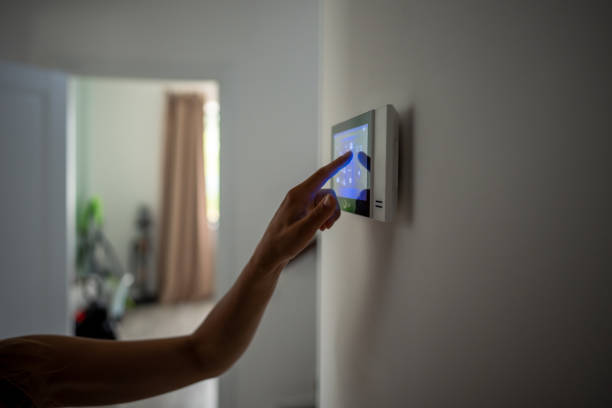
System Compatibility and Requirements
Successful HVAC home automation implementation begins with understanding system compatibility, as most modern smart devices work with standard HVAC configurations, including forced air, radiant heating, heat pumps, and central air conditioning systems. Before investing in smart home technology, verify that your existing HVAC system can support the devices you’re considering, paying special attention to components like your HVAC compressor and overall system age. Professional HVAC services can evaluate your system and recommend the best automation solutions for your specific setup while ensuring proper system compatibility.
Installation and Setup Process
The installation process for HVAC home automation varies depending on system complexity, with many smart thermostat models featuring easy installation that homeowners can complete in under an hour using basic tools. Comprehensive home automation systems involving multiple zones, smart vents, and integration with various smart home devices typically benefit from professional installation to ensure proper wiring, calibration, and optimal performance. When creating your automated climate control network, consider starting with essential components and expanding gradually, which allows you to learn the systems, adjust to new features, and budget for additional devices over time.
Integration with Existing Smart Home Technology
Modern hvac home automation offers seamless integration with existing smart home technology through standard communication protocols that enable different devices from various manufacturers to work together harmoniously. Your smart hvac system can interact with security systems, lighting control, window treatments, and appliances to create sophisticated automation routines that enhance your home’s comfort.
Understanding smart home connectivity standards helps ensure your devices communicate effectively. For example, your system might detect when you’ve locked the doors for the night and automatically adjust temperature settings to your sleep preferences while dimming lights throughout the house.
Smart Home Devices That Complement HVAC Automation
While your core HVAC system forms the foundation of climate control, complementary smart devices multiply its capabilities exponentially. These supporting technologies work in concert with your heating and cooling equipment to create a truly intelligent home environment.
Essential Smart Device Categories
| Device Category | Primary Function | Energy Impact | Integration Benefits |
|---|---|---|---|
| Environmental Sensors | Monitor humidity, air quality, occupancy, and ambient light | Help hvac system make intelligent decisions about heating, cooling, and ventilation | Focus climate control on occupied spaces and save energy in empty areas |
| Smart Plugs & Energy Monitors | Track power consumption across your home | Identify opportunities for energy savings and optimize during peak demand periods | Understand how heating and cooling systems impact overall energy usage |
| Voice Assistants | Provide hands-free climate control | Minimal direct impact, enhances accessibility | Seamless integration with smart thermostat and cooling systems platforms like Amazon Alexa |
| Smart Vents | Direct airflow to specific zones | Reduce wasted energy on unoccupied spaces | Create precise temperature control with different temperatures per room |
These complementary devices work together with your HVAC home automation to create a responsive environment that anticipates your needs while minimizing energy consumption. Environmental sensors play a particularly crucial role by monitoring factors that help your system make intelligent decisions about when to adjust heating and cooling operations for maximum efficiency.
Choosing the Right HVAC Home Automation System
Selecting the perfect HVAC home automation solution requires balancing technical requirements, budget constraints, and long-term goals for your smart home. With countless options available, understanding what features matter most and which installation approach suits your situation ensures you invest wisely in technology that serves you well for years to come.
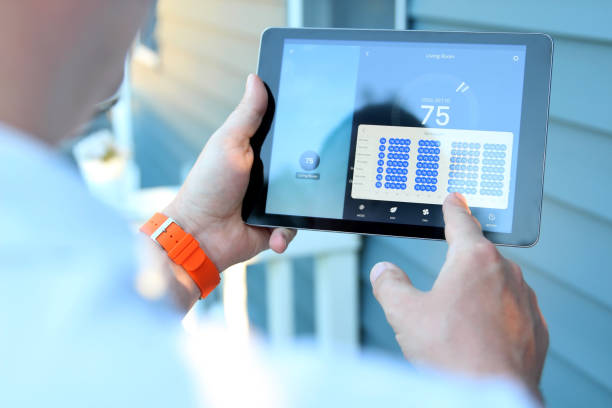
Assessing Your Needs and Budget
Selecting the ideal HVAC home automation solution requires careful consideration of your specific requirements, with costs varying widely from basic smart thermostat installations under $250 to comprehensive whole-home systems exceeding several thousand dollars.
Start by evaluating your current HVAC system, home size, and climate control priorities to determine whether you’re primarily interested in energy savings, enhanced comfort, or comprehensive smart home integration.
Professional consultation from qualified technicians at Callidus Air can provide valuable insights into which systems best suit your home and budget, helping you understand the investment relative to long-term energy savings and improved home comfort.
Top Features to Look For
When evaluating smart devices for your hvac home automation project, prioritize these essential features:
- Learning capabilities: Systems that adapt to your preferences over time
- Geofencing: Automatic adjustments based on your location
- Multi-zone control: Independent temperature management for different areas
- Energy reporting: Detailed insights into consumption patterns
- Compatible platforms: Works with your existing smart home devices
- User-friendly app: Intuitive smartphone control
- Reliable wi fi: Strong connectivity for consistent performance
- Professional support: Access to expert assistance when needed
Professional vs. DIY Installation
While some HVAC home automation components feature easy installation for DIY enthusiasts, comprehensive systems involving ductwork modifications or multiple zones should be handled by certified technicians to ensure optimal results.
Smart thermostat replacement often falls within DIY capabilities for those comfortable with basic wiring, but professional installation ensures proper system compatibility, optimal performance, and warranty compliance. Commercial HVAC service providers and residential HVAC services offer expert installation that eliminates guesswork and potential complications while setting up your smart HVAC system correctly.
Maintenance and Optimization
Even the most advanced HVAC home automation systems require regular attention to maintain peak performance and deliver the energy savings and comfort you expect. Proper maintenance combined with ongoing optimization ensures your investment continues providing maximum value while preventing costly breakdowns.
Regular System Maintenance
Like all HVAC equipment, automated systems require regular maintenance to maintain peak efficiency and deliver consistent comfort through heating maintenance and AC maintenance services. Key tasks include filter replacement every 1-3 months for optimal airflow, annual professional inspections to identify potential issues, software updates for smart devices to access new features, sensor cleaning and calibration for accurate readings, and battery replacement in wireless components.
Understanding how often to change HVAC filters and following proper HVAC filter replacement schedules ensures your smart HVAC system continues operating efficiently.
Optimizing for Maximum Efficiency
Maximizing the benefits of your HVAC home automation requires ongoing optimization through regular review of energy reports from your smart thermostat to identify patterns and improvement opportunities. Adjust schedules seasonally to account for changing daylight hours and weather conditions while experimenting with temperature settings to find the sweet spot between comfort and efficiency.
Consider how other smart home devices interact with your HVAC to create more efficient automation scenarios, such as integrating smart window coverings to block solar heat gain during summer afternoons and reduce the burden on your cooling system.
The Future of HVAC Home Automation
The future of HVAC home automation promises even greater integration, intelligence, and efficiency through emerging technologies like predictive maintenance using artificial intelligence and advanced occupancy detection through machine learning.
As smart home technology continues evolving, we can expect systems that anticipate your needs with greater accuracy, adapt to weather patterns more effectively, and coordinate with utility programs to optimize costs during peak demand periods. The ability to manage every aspect of your home’s climate from a single app or interface will become increasingly sophisticated and user-friendly.
In Summary
HVAC home automation represents a powerful combination of comfort, convenience, and efficiency that’s transforming residential climate control by integrating smart devices with your heating and cooling systems. Whether you start with a simple smart thermostat or invest in a comprehensive smart home integration system, the benefits of automated climate control extend far beyond temperature regulation to deliver unprecedented control over your home’s comfort while achieving significant energy savings.
Ready to transform your home with HVAC home automation?
The experts at Callidus Air can help you design, install, and maintain the perfect smart home climate control solution for your needs. Contact us today to schedule a consultation and discover how automation can enhance your home’s comfort and efficiency.
Frequently Asked Questions
How much can HVAC home automation save on energy bills?
Most homeowners experience energy savings of 15-30% after implementing HVAC home automation systems. Actual savings depend on factors like your current system efficiency, home size, climate, and usage patterns. Smart thermostats and energy management systems help optimize energy usage by learning your schedule and adjusting heating and cooling automatically.
Will smart HVAC devices work with my existing heating and cooling system?
Most smart devices are compatible with standard HVAC configurations, including gas furnaces, electric heat, central air conditioning, and heat pumps. However, system compatibility varies by manufacturer and model. Professional assessment from residential HVAC services can determine the best solutions for your home and ensure proper integration with existing systems.
Can I install HVAC home automation myself?
Many smart thermostat models feature easy installation that DIY-capable homeowners can complete in 30-60 minutes using basic tools. However, comprehensive home automation systems involving multiple zones, smart vents, or significant wiring modifications typically require professional installation to ensure proper system compatibility and optimal performance.
How does HVAC home automation integrate with other smart home devices?
Modern HVAC home automation uses standard communication protocols like Wi-Fi, Zigbee, and Z-Wave to integrate seamlessly with various smart home devices. Your smart HVAC system can coordinate with voice assistants like Amazon Alexa, security cameras, lighting systems, smart blinds, and other devices to create sophisticated automation scenarios that enhance convenience and efficiency.
What maintenance do automated HVAC systems require?
Automated systems require the same basic maintenance as traditional HVAC equipment, plus occasional attention to smart devices. Essential tasks include changing filters every 1-3 months, scheduling annual professional inspections through heating maintenance or AC maintenance services, updating software, cleaning sensors, and replacing batteries in wireless components.

